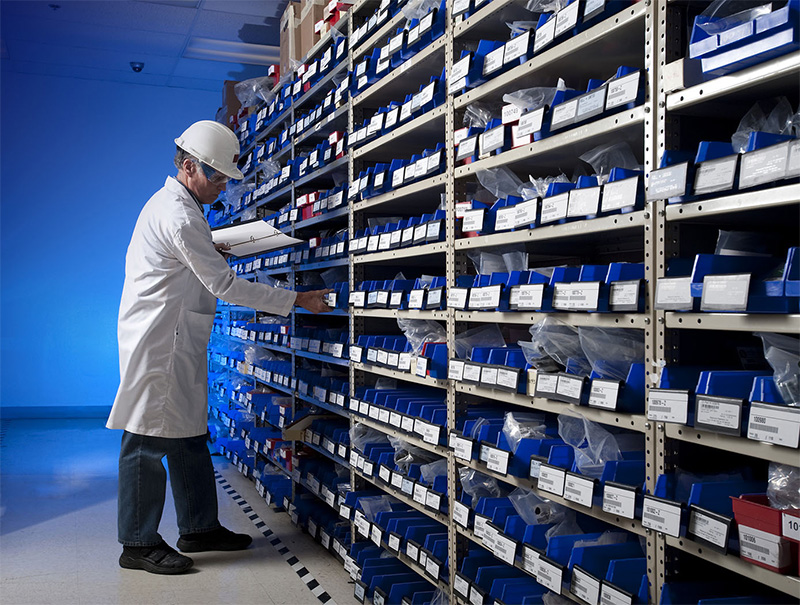Your location: Home Page > RFID Blog | SILION TECH > Space Station Science Highlights – A serious game of RFID Tags
News and Information
Space Station Science Highlights – A serious game of RFID Tags
Author:2023-12-05 21:25:23
In the vastness of space, the International Space Station (ISS) serves as a microgravity laboratory where astronauts engage in groundbreaking scientific investigations. Let's delve into the captivating experiments conducted during the week of October 24, shedding light on the body's adaptation to space, a high-tech game of tag, and the intriguing behavior of liquids in microgravity.
Regulating Blood Pressure in Space: A Vital Exploration
Astronauts undertaking space missions face unique challenges as their cardiovascular, respiratory, and musculoskeletal systems change. These alterations, akin to those associated with aging, present challenges for long-duration missions, such as those envisaged for Mars or the Moon. The Canadian Space Agency's (CSA) investigation, CARDIOBREATH, explores the combined effects of cardiovascular and respiratory adaptations on blood pressure regulation in space. This research aims to enhance our understanding of these mechanisms, potentially contributing to improved healthcare and enhanced quality of life for the elderly on Earth. Throughout the week, dedicated crew members conducted respiratory measurements for this critical investigation.
A High-Stakes Game of RFID Tag in Space

Enter the realm of RFID Recon, a cutting-edge experiment leveraging radio frequency identification RFID technology on the ISS. This sophisticated system, incorporating RFID readers and antennas on a free-flying Astrobee robot, engages in a serious game of tag by identifying and locating tagged cargo aboard the station. Similar to barcodes but far more advanced, RFID tags operate electronically without requiring a line of sight, enabling wireless communication. The potential benefits are manifold; it can assist astronauts in swiftly locating items and facilitates efficient packing, reducing launch mass and volume. In the future, this technology might even empower robots to prepare mission destinations ahead of human arrival. On Earth, RFID has primarily been utilized for supply chain logistics. Still, its precise item-tracking capabilities hold promise for automating operations across various sectors, including warehousing, shipping, manufacturing, and healthcare. The dedicated installation of an RFID recon reader on an Astrobee and the gathering of RFID data for cargo movement marked significant progress during the week.
Unlocking the Secrets of Liquid Behavior in Microgravity
The European Space Agency (ESA) spearheads the FLUIDICS investigation, a fascinating exploration of sloshing, turbulence, and other liquid behaviors within a sphere in microgravity. This experiment serves as a model for understanding what transpires in a spacecraft's fuel tank. The potential insights gained from FLUIDICS could revolutionize our ability to measure liquid volume, thereby refining the guidance and precision of satellites and their fuel management systems, ultimately extending their lifespan. Moreover, this investigation holds promise for enhancing our comprehension of Earth's oceans, including the mysterious phenomenon of "rogue waves." Beyond space exploration, the knowledge gained could contribute to improved climate prediction systems and optimize the utilization of ocean-based renewable energy. Crew members dedicatedly conducted experimental runs throughout the week, contributing valuable data to this cutting-edge study.
A Symphony of Microgravity Investigations: Beyond the Horizon
The microgravity wonders aboard the ISS extend beyond these highlighted investigations. The Repository serves as a biological specimen storage bank, supporting scientific research on human physiological changes and adaptation to microgravity. This repository is a treasure trove for longitudinal studies spanning multiple missions, often leading to medical advances with implications for life on Earth.
In the realm of dietary exploration, Food Physiology examines the effects of an enhanced spaceflight diet on immune function, the gut microbiome, and nutritional status indicators. This study holds the promise of guiding dietary enhancements to support adaptation to spaceflight.
XROOTS takes advantage of the Veggie facility to experiment with hydroponic and aeroponic techniques, aiming to grow plants without traditional soil. This research has implications for future space exploration and can enhance plant cultivation in terrestrial settings, such as greenhouses.
Collaborative efforts between ESA and the State Space Corporation ROSCOSMOS bring forth PK-4, a study delving into complex plasmas—low-temperature mixtures of ionized gas, neutral gas, and micron-sized particles. Understanding how plasma crystals form in microgravity has potential applications in space research and may lead to advancements in industries utilizing plasmas on Earth.
The Standard Measures investigation gathers core measurements, offering insights into behavioral health, cellular profiles, immunology, the microbiome, biochemistry markers, sensorimotor changes, and cardiovascular health. These measurements aid researchers in characterizing adaptive responses to living and working in space and evaluating the effectiveness of countermeasures.
In a bid to engage and inspire, ISS Ham Radio sessions connect students, teachers, parents, and communities directly with astronauts via ground-based amateur radio units. This interactive experience fosters interest in science, technology, engineering, and math, encouraging the next generation of explorers.
Credits: NASA